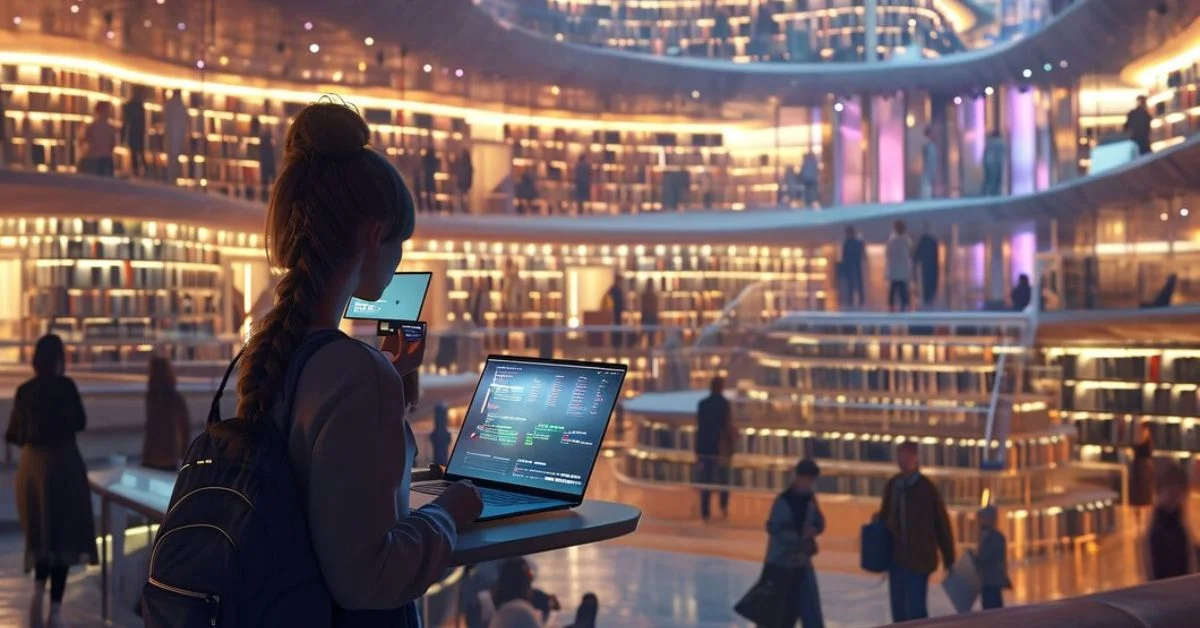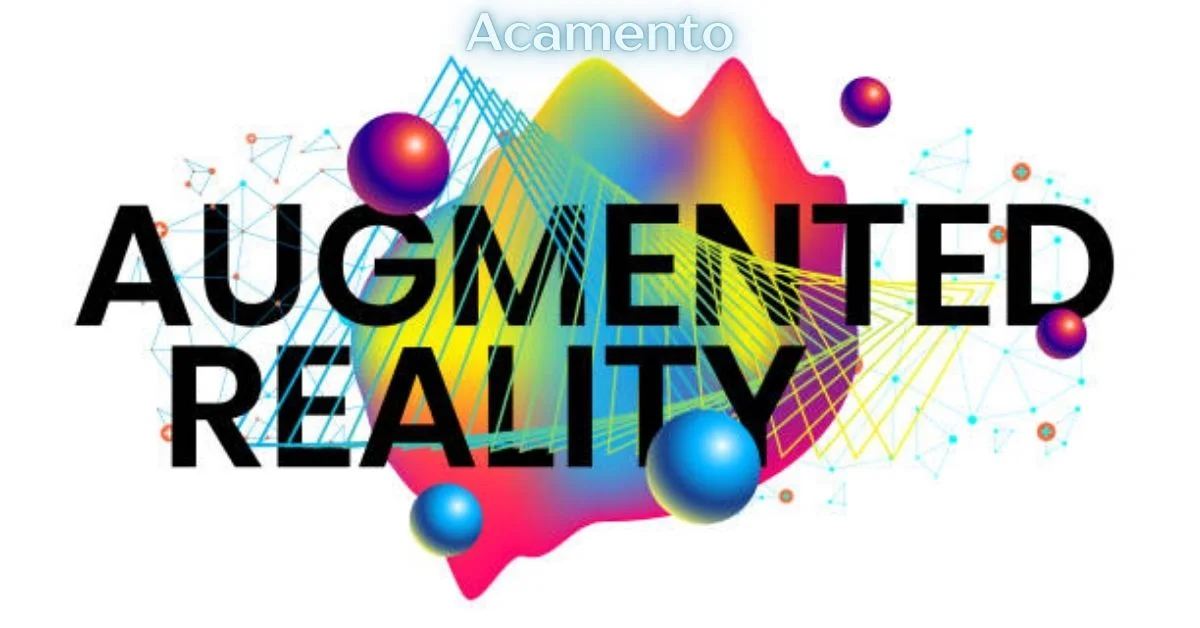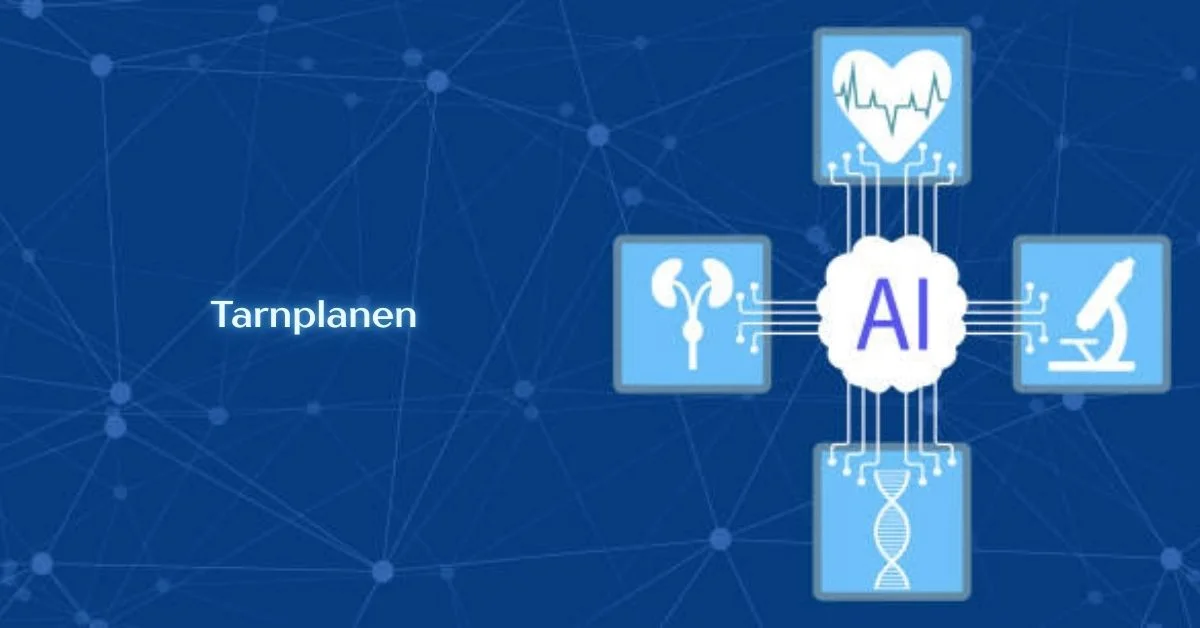TECHNOLOGY
Design Trends Shaping the Future of Trade Shows

Table of Contents:
- The Rise of Interactive Technology in Exhibitions
- Green Exhibiting: Embracing Sustainability
- Maximizing Space with Modular Designs
- Enhanced Networking through Lounge Areas
- Smart Data Collection for Personalized Follow-Ups
- Integrating Multi-Sensory Experiences
- Utilizing Social Media to Amplify Engagement
The Rise of Interactive Technology in Exhibitions
Today’s Exhibition attendees seek immersive experiences beyond traditional static displays’ visual spectacle. Enter the age of interactive technology: a transformative force for trade show display companies, where cutting-edge mediums like augmented reality, virtual reality, and real-time digital engagement have become instrumental. These tools are revolutionizing the way products are presented and brands are perceived, making visitor interaction an adventure in and of itself.
Incorporating technologies allowing augmented reality applications, interactive kiosks, and tailored content streams fosters a sense of agency among attendees. They are no longer passive bystanders; they become an active part of the narrative unfolding within the booth. This technological expression provides depth to the brand’s storytelling, painting a vivid picture of possibilities and crafting a long-lasting memory in the minds of the visitors.
Key Takeaways:
- Advanced technology provides interactive and personalized trade show experiences.
- Eco-friendly practices are not a trend but necessary for brand reputation and environmental impact.
- Modularity in design ensures adaptability and sustainability, allowing for dynamic brand presentation.
- Creating networking-friendly spaces within booths can lead to improved relationships and partnerships.
- Global inclusivity in design allows for broader audience engagement and showcases brand sensibility.
- Narrative-driven showcases are moving past traditional selling points by creating brand-aligned stories.
- Well-thought-out lighting can dramatically shift the focus and mood of an exhibit.
- Data-driven follow-up strategies ensure meaningful connections post-event and improve return on investment.
- Multi-sensory experiences can cement a brand’s memory in a client’s mind.
- Leveraging social media within booths can extend the reach of the brand exponentially.
Green Exhibiting: Embracing Sustainability
In response to a global call for responsibility towards the environment, trade show participants have vigorously adopted sustainability as a core principle in exhibit design. Exhibitors demonstrate their environmental stewardship using sustainable materials, efficient waste management, and eco-friendly practices. These positive steps allow brands to showcase themselves as progressive and responsible, aligning their practices with customer values.
Innovative use of biodegradable materials, LED lighting, and digital literature are just a few approaches to minimize environmental impact. By following the principles of reducing, reusing, and recycling, exhibitors put up a green front and engage in practices with significant ecological merits.
Maximizing Space with Modular Designs
Streamlining exhibition space has led to the rise of modular design elements. Exhibitors who turn to modular systems enjoy many benefits, including the flexibility to create fresh looks and configurations for different shows, the ease of transportation and storage, and the scalability to adjust to various booth sizes and layouts. These modular elements enable many creative and practical uses of floor space, no matter the constraints of the exhibition hall. One of the most strategic advantages of modular designs is the life span of the structures themselves. Exhibitors can reuse and repurpose modules across various events, cutting costs and contributing to the sustainability efforts the industry is increasingly embracing. Modular designs represent a convergence of aesthetics, convenience, and environmental consciousness, which speaks volumes about the brand’s commitment to innovation and responsibility.
Moreover, when discussing design trends shaping the future of trade shows, considering factors such as shot show booth cost is essential for exhibitors seeking to balance innovation with budget constraints.
Enhanced Networking through Lounge Areas
Trade shows aren’t just venues for showcasing new products and essential networking hubs. Recognizing this, savvy exhibitors are creating well-designed lounge areas within their exhibits. These spaces serve as informal meeting points that encourage relaxed interaction and conversation. Lounge areas with comfortable seating, charging stations, and refreshments provide a much-needed break for attendees, making them more receptive to networking and engagement with the brand.
These networking lounges can leave a lasting impression, facilitating deeper discussions that could lead to meaningful business relationships. Exhibitors can create a micro-environment that reflects the brand’s hospitality and attention to attendee comfort by providing an aesthetically pleasing and functional space.
Smart Data Collection for Personalized Follow-Ups
Trade shows offer a golden opportunity for data collection, allowing exhibitors to gather rich insights into attendee preferences and behaviors. By utilizing intelligent technologies and data-collection tools, companies can amass valuable information to drive targeted marketing efforts post-event. These insights enable personalized communication, enhancing the relationship between the visitor and the brand and increasing the potential for conversion and loyalty.
As a result, post-trade show engagements can become highly effective through tailored correspondence that reflects the attendee’s interests. Intelligent data collection tools simplify lead generation and empower exhibitors with the data required for insightful follow-ups that resonate on a personal level.
Integrating Multi-Sensory Experiences
Integrating multi-sensory stimuli within a trade show booth can elevate the attendee experience tremendously. Exhibitors who engage touch, smell, sound, and taste, in addition to sight, create more memorable and engaging environments. The use of tactile exhibits, scented areas, ambient sounds, or even taste testing, where appropriate, can leave a lasting impression that surpasses that of a visually striking display alone.
Multi-sensory experiences can evoke emotions, recall memories, and create strong associations with the brand. In a competitive environment like a trade show, the ability to engage attendees on multiple levels may be the distinguishing factor that sets a brand apart.
Utilizing Social Media to Amplify Engagement
In our hyper-connected world, incorporating social media strategies into trade show exhibits has become imperative. Designing shareable moments within the booth can encourage attendees to post about their experience on social media, effectively serving as brand ambassadors. Creative photo opportunities, interactive contests, and live social media feeds can captivate an online audience and amplify a brand’s reach beyond the walls of the exhibition site.
These strategies create buzz during the show and elevate post-show engagement as content continues to be shared and discussed online. An ‘Instagrammable’ space is more than just aesthetic; it’s a strategic marketing move that can lead to increased visibility, brand awareness, and an expanded audience.
TECHNOLOGY
Acamento: Elevating Design Through Flawless Finishing Art

The Invisible Signature: Why Acamento Matters More Than You Think
Imagine walking into a room where every element—the curve of the chair, the gloss of the tabletop, the way the light dances on textured walls—feels intentionally perfected. You can’t quite point to what’s making it feel “complete,” but you know it’s not accidental. This feeling, this sensory satisfaction, is the work of Acamento.
Often overlooked, acamento is the silent champion of design excellence. It’s not just about decoration; it’s the culmination of all choices, the final whisper that transforms ordinary work into enduring art. And in today’s experience-driven world, acamento is no longer a luxury—it’s an expectation.
Explore related articles to deepen your understanding before you go.
What is Acamento?
At its core, Acamento is the art and science of finishing. Borrowed from Portuguese, where it means “finishing” or “completion,” acamento encapsulates the final surface treatment, polish, or detail added to a product, environment, or interface to enhance both function and aesthetics.
Think of acamento as the final frame on a masterpiece, or the seamless UX animation in a mobile app—it doesn’t scream for attention, but without it, the entire experience feels incomplete.
Whether it’s the satin lacquer on hardwood, the soft-close feature in a cabinet, or the subtle fade in a digital interface, acamento makes feeling design possible.
Origins: The Philosophy and History Behind Acamento
While the term might be modern, the concept dates back to ancient craftsmanship. From Egyptian hieroglyphs to Japanese Kintsugi, societies have long prized not just what something is—but how it’s finished.
- Ancient Rome: Marble statues were polished to a gleam for divine appeal.
- The Renaissance: Artists like Michelangelo spent as much time on polishing as they did sculpting.
- Modernism: Designers like Dieter Rams emphasized “as little design as possible,” where finishing played a huge role in elevating simplicity.
Philosophically, acamento aligns with aesthetic completeness—an idea rooted in Gestalt psychology, where our brains find pleasure in patterns, balance, and resolution.
Where Acamento Lives Today: Multi-Sector Applications
In our hyper-designed world, acamento is everywhere—sometimes visible, often felt.
Here’s how it’s reshaping industries:
Real-World Use Cases
| Sector | Use Case Example | Result or Benefit |
|---|---|---|
| AI | Voice assistant tone tuning and response cadence | More human-like interaction, better engagement |
| Healthcare | Medical device texture and ergonomic grip | Improved patient comfort and compliance |
| Education | Interactive whiteboard design with minimal lag | Enhanced learning experience |
| Business | Packaging design for premium product launches | Higher perceived value and brand loyalty |
| UX/UI Design | Smooth transitions and feedback animations | Reduced cognitive load, improved usability |
| Architecture | Wall finishes that absorb sound in open offices | Quieter, more productive environments |
Acamento vs Traditional Finishing: What Sets It Apart?
Not all finishing is acamento. Traditional methods often emphasize utility or mass production. Acamento is intentional, multi-sensory, and user-centric.
Key Differences Comparison
| Feature/Aspect | Acamento | Traditional Model |
|---|---|---|
| Scalability | Customizable yet replicable | Often fixed for mass output |
| Adaptability | Context-aware and flexible | One-size-fits-all approach |
| User Focus | Emotional and tactile resonance | Functional but impersonal |
| Aesthetic Value | Elevates perception | Typically secondary to function |
| Longevity | Durable and memorable | May degrade or feel outdated fast |
What’s Next: Future Trends in Acamento
With the rise of personalization and sensorial design, acamento’s is moving beyond physical surfaces into digital, AI, and even bio-integrated spaces.
Emerging trends include:
- Neurodesign: Finishes tailored to neurological responses (e.g., calming textures in mental health apps).
- Digital Acamento: Micro-interactions in AR/VR environments that mimic real-world finishing.
- Ethical Finishing: Sustainable acamento practices using non-toxic, biodegradable materials.
As AI-generated design tools become mainstream, acamento’s will be the human fingerprint—the proof of intentionality and care in a machine-made world.
Best Practices: Designing with Acamento in Mind
Whether you’re building a product, launching an app, or curating a space, these principles can guide you in harnessing the power of acamento.
Implementation Tips / Best Practices
| Strategy/Tip | Description | Value Delivered |
|---|---|---|
| Focus on Sensory | Use touch, sight, and even sound for finishing | Creates immersive experiences |
| Start with Purpose | Define what emotion or perception you want to evoke | Anchors your design choices |
| Iterate on Feedback | Test finishes with real users and refine accordingly | Ensures relevance and satisfaction |
| Prioritize Context | Design acamento for environment or use-case | Increases functional harmony |
| Use Ethical Materials | Choose sustainable and safe finish methods | Aligns with modern consumer values |
Conclusion: The Emotional Pulse of Design
Acamento isn’t just about how things look—it’s about how they feel. It’s the sigh of satisfaction after closing a perfectly balanced drawer, the awe inspired by a minimalist interface, or the warmth of holding a well-finished object in your hands.
In a world racing toward efficiency and speed, acamento’s invites us to pause—and notice. Because at its best, acamento doesn’t just complete a product. It completes an experience.
Loved this post? You’ll find even more just like it on our blog!
FAQs
Q1: What is acamento in plain terms?
A: It’s the final polish or detail that makes something look and feel complete.
Q2: Is acamento’s only used in furniture or home design?
A: No! It applies to digital design, packaging, apps, devices—anywhere finishing matters.
Q3: Why is acamento’s important?
A: Because it elevates quality, improves usability, and creates a lasting emotional impact.
Q4: Can acamento’s be sustainable?
A: Yes, ethical acamento’s uses eco-friendly materials and avoids wasteful finishes.
Q5: How can I add acamento’s to my design process?
A: Start by focusing on the end experience. Think about how users should feel when they interact with your product—and refine the final touches accordingly.
TECHNOLOGY
Tarnplanen: A New Blueprint for Real-Time Decision-Making

Introduction: The Map That Moves with You
Imagine navigating a dense forest with a GPS that doesn’t just mark your route but adapts in real time—responding to weather changes, unexpected terrain, or your shifting goals. That’s the conceptual power of Tarnplanen, a new way of planning that reshapes how we make decisions under pressure and uncertainty.
In a world where rigid schedules crumble in the face of global disruption—pandemics, climate shifts, AI revolutions—we need more than a plan. We need a living map. Enter Tarnplanen.
What Is Tarnplanen? A Definition in Motion
Tarnplanen is not your typical planning framework. It refers to a layered coordination structure for adaptive decision-making in complex, multivariable environments. Think of it as a flexible scaffolding that grows, contracts, and repositions itself in real-time to align with both internal feedback and external change.
Unlike traditional models that rely on sequential logic and static assumptions, Tarnplanen functions more like liquid architecture—built to bend, not break.
Metaphor: If a Gantt chart is a train on fixed tracks, Tarnplanen is a drone that recalibrates its flight path based on wind, terrain, and mission updates.
Roots of Tarnplanen: A Hybrid of Philosophy, Tech, and Chaos Theory
The philosophy behind Tarnplanen draws from several streams:
- Systems Thinking: Understanding that no element exists in isolation.
- Chaos Theory: Small changes lead to vast, nonlinear outcomes.
- Agile Methodologies: Prioritizing iteration, feedback loops, and stakeholder alignment.
Historically, war rooms, disaster response systems, and space missions required similar dynamic planning. But technology and data now allow us to scale these adaptive mechanisms across everyday industries.
Explore related articles to deepen your understanding before you go.
Real-World Applications: Tarnplanen in Action
Tarnplanen is gaining traction in sectors that demand fast, intelligent adaptation. Here’s a look at its real-world applications:
Real-World Use Cases
| Sector | Use Case Example | Result or Benefit |
|---|---|---|
| AI | Adaptive model tuning based on real-time inputs | Improved accuracy and responsiveness |
| Healthcare | Dynamic patient monitoring during surgery | Reduced risk and personalized treatment |
| Education | Real-time curriculum shifts via student feedback loops | Enhanced engagement and learning outcomes |
| Business | Flexible product roadmaps based on market data | Faster go-to-market and reduced waste |
Why Tarnplanen Wins: Comparisons & Differentiation
What sets Tarnplanen apart from conventional planning methods? Let’s break it down:
Key Differences Comparison
| Feature/Aspect | Tarnplanen | Traditional Model |
|---|---|---|
| Scalability | Built to expand with complexity | Struggles beyond fixed variables |
| Adaptability | Real-time recalibration | Static until formally revised |
| User Focus | Multi-input, decentralized | Top-down, expert-driven |
Tarnplanen’s advantage is its resilience. It’s not just about predicting the future—it’s about responding effectively when predictions fail.
Emerging Trends & Future Implications
As AI becomes more embedded in our daily decision-making, Tarnplanen is poised to underpin smarter autonomous systems. Expect developments in:
- Augmented cognition: AI helping humans adapt in real time (think smart wearables).
- Decentralized governance: Communities using Tarnplanen-like structures for responsive policy.
- Climate response systems: Dynamic models adjusting in real-time to environmental data.
But risks loom: algorithmic overreach, ethical dilemmas in automated decisions, and loss of transparency. Future versions must ensure human oversight and cultural adaptability.
Implementation Blueprint: Making Tarnplanen Work
Deploying Tarnplanen isn’t about installing new software—it’s about shifting mindset and systems toward fluid responsiveness. Here’s how:
Implementation Tips / Best Practices
| Strategy/Tip | Description | Value Delivered |
|---|---|---|
| Focus on Feedback Loops | Establish fast, frequent input cycles from users and environment | Ensures continuous course correction |
| Start with Microplans | Pilot Tarnplanen at a small scale (e.g., one department) | Builds early wins and insights |
| Iterate on Structure | Refine your decision map regularly—don’t set it and forget it | Maintains agility and relevance |
Whether it’s a startup pivoting strategy or a hospital managing a crisis, Tarnplanen thrives where change is constant.
Conclusion: Planning for Humans, Not Machines
At its core, Tarnplanen is a response to the human condition in a digital world. We are not linear beings—we adapt, shift, improvise. Why shouldn’t our plans do the same?
Tarnplanen’s isn’t just a framework. It’s a philosophy of living intelligence. It teaches us that the smartest path forward isn’t the one most mapped—it’s the one most responsive.
In adopting Tarnplanen, we reclaim flexibility, resilience, and above all, relevance in a world that refuses to stand still.
Loved this post? You’ll find even more just like it on our blog!
FAQs
Q1: What is Tarnplanen in plain terms?
A: It’s a flexible, real-time planning method that changes as your situation changes.
Q2: Is Tarnplanen’s a software tool?
A: No, it’s a planning philosophy or framework. But tools can be designed around it.
Q3: Who should use Tarnplanen’s?
A: Anyone in fast-changing environments—business leaders, teachers, doctors, or even parents.
Q4: What’s the biggest advantage of Tarnplanen’s?
A: Its ability to adapt in real time, reducing risk and waste.
Q5: How do I get started with Tarnplanen’s?
A: Begin small—use it for a single project or decision, and build feedback loops from there.
APPS & SOFTWARE
Exploring the Unique Features of Janitor AI Chatbot

Janitor AI is a chatbot website with a unique anime-style character. Users can chat with other people’s characters or create their own. What sets Janitor AI apart is its support for NSFW roles, which is appealing to many users. Users can make money through chat services on Janitor AI, adding diversity to the character experience. However, the NSFW support also raises security concerns.
Janitor AI: A Unique Chatbot Experience
Janitor AI offers a unique chatbot experience through its anime-style character chat robot website. Users have the option to create their own characters or engage in conversations with other users’ created characters. What sets Janitor AI apart from other AI chatbots is its support for NSFW roles, allowing users to break through traditional security norms and explore more daring interactions. This feature has proven to be attractive to many users seeking a different kind of chatbot experience. While Janitor AI provides an opportunity for users to monetize their characters through chat services, the support for NSFW content also raises concerns about potential security issues.
Janitor AI Features
Janitor AI is an innovative platform that offers various features for users to interact with its anime-style character chat robot. Users can engage in conversations with the Janitor AI, create their own unique characters, or even chat with characters created by other users. The platform not only provides a fun and interactive experience but also allows users to generate income through chat services. This feature promotes diversity and enhances the overall character experience on Janitor AI, making it a popular choice for those looking to engage in creative and entertaining interactions online.
Diverse character styles
Janitor AI is a unique website that offers a diverse range of character styles through its anime-style chat robot feature. Users have the option to create their own customized characters or engage in conversations with other user-created characters. The platform also allows users to monetize their chat services, offering a creative way for individuals to earn money while enhancing the overall character diversity and user experience on Janitor AI. This innovative concept not only fosters creativity but also promotes a sense of community among users who share a passion for engaging with virtual characters.
Character marketization
Janitor AI is a unique website that offers a character marketization platform with its anime-style character chat robot feature. Users have the option to create their own characters or interact directly with other users’ created characters. This innovative concept allows everyone to not only enjoy chatting with various characters but also earn money by providing chat services. By fostering diversity and enhancing the overall user experience, Janitor AI opens up new opportunities for both creators and consumers in the digital world.
Adult content availability
Janitor AI is a unique website that offers adult content availability through its anime-style character chat robot, Janitorai. Users have the option to create their own characters or engage in conversations with other users’ created characters. The platform allows everyone to participate in creating characters and provides opportunities to earn money through chat services. This feature not only enhances the diversity of characters but also enriches the overall user experience on Janitor AI.
Local deployment option
Janitor AI offers a local deployment option for users to interact with its anime-style character chat robot website. Users can engage with the Janitor AI, a free service that allows them to create their own characters or chat directly with other users’ created characters. This platform provides an opportunity for everyone to not only explore diverse character creations but also potentially earn money through chat services. By enhancing the overall experience and diversity of characters available, Janitor AI aims to provide a unique and engaging online environment for users to connect and express themselves creatively.
Benefits of Using Janitor AI
Janitor AI is a unique anime-style character chat robot website that offers numerous benefits to its users. Not only can individuals create their own personalized characters, but they can also engage in conversations with other users’ created characters. The platform allows for a diverse and enriched experience, giving everyone the opportunity to showcase their creativity and interact with a wide range of characters. Additionally, users have the chance to make money through chat services on Janitor AI, further enhancing the appeal and utility of this innovative platform.
Personalized chat experience
Janitor AI offers a unique and personalized chat experience through its innovative AI technology. Users can interact with the Janitor AI, a charming anime-style character chat robot, for free on the website. Whether it’s seeking assistance with cleaning tips or simply engaging in casual conversation, Janitor AI is there to provide support and entertainment. The janitorai platform allows users to enjoy a fun and interactive experience while receiving helpful information and guidance from this virtual assistant.
Income generation opportunities
Janitor AI is a cutting-edge income generation opportunity that offers a free and innovative chatbot service. This unique AI, designed as an anime-style character, has quickly gained popularity for its ability to provide efficient cleaning solutions through interactive conversations. Users can access Janitor AI’s services through a chat platform, making it easy and convenient to receive assistance with various cleaning tasks. The combination of technology and creativity in Janitor AI makes it stand out as a versatile tool for both personal and commercial use.
Enhanced character diversity
Janitor AI is a unique anime-style character chat robot website that offers enhanced character diversity. Users can interact with the Janitor AI for free and engage in conversations through the Janitor AI chat feature. This innovative technology brings a fun and interactive element to online communication, allowing users to experience a unique and engaging way to connect with others. The Janitor AI adds a creative twist to traditional chat platforms, offering users an entertaining and personalized experience unlike any other.
Concerns and Challenges
One of the concerns and challenges surrounding the Janitor AI website is the potential impact of offering a free chat service with an anime-style character. While the novelty and entertainment value of interacting with an AI chatbot in this unique format may attract users, there are worries about the reliability and effectiveness of such a system. Additionally, there may be ethical considerations regarding the use of anime-style characters for customer service interactions. As Janitor AI continues to develop and refine its services, addressing these concerns will be crucial to ensuring a positive user experience and maintaining trust in the platform.
Security risks with NSFW content
The use of NSFW content on the Janitor AI website poses significant security risks for both the users and the platform itself. Such content can attract malicious actors and expose users to potential harm, such as phishing attacks or malware distribution. Additionally, the anime-style character chat robot format of Janitor AI may inadvertently make users more susceptible to engaging with risky content, as the cute and friendly appearance of the AI may lower their guard. It is crucial for the platform to implement strict security measures and moderation protocols to protect its users from these dangers.
Potential misuse of adult themes
There is a concern about the potential misuse of adult themes on the Janitor AI website, which features an anime-style character chat robot. The playful and colorful design of the website may attract younger audiences who could inadvertently stumble upon inappropriate content. It is important for the creators of Janitor AI to implement strict moderation measures to ensure that users are not exposed to any harmful or explicit material while interacting with the chatbot. Balancing the whimsical nature of the anime character with responsible content management will be crucial in maintaining a safe and enjoyable experience for all users.
Conclusion:
The Janitor AI Chatbot offers a range of unique features that set it apart from other chatbots in the market. Its advanced algorithms and machine learning capabilities allow for efficient and accurate responses to user queries. The free version of Janitor AI provides a valuable opportunity for businesses to experience its benefits without financial commitment. With its user-friendly interface and customizable options, Janitor AI is a powerful tool for enhancing customer service and streamlining operations. To take advantage of the innovative features of Janitor AI Chatbot, businesses are encouraged to explore its capabilities and integrate it into their workflow today.

 ENTERTAINMENT4 days ago
ENTERTAINMENT4 days agoExploring the Kristen Archives: A Treasure Trove of Erotica and More

 ENTERTAINMENT1 day ago
ENTERTAINMENT1 day agoKiss KH: The Streaming Platform Redefining Digital Engagement and Cultural Currents

 EDUCATION1 day ago
EDUCATION1 day agoLingrohub Platform: A Complete Student Access Guide

 LIFESTYLE4 months ago
LIFESTYLE4 months agoThe Disciplinary Wives Club: Spanking for Love, Not Punishment

 TECHNOLOGY1 day ago
TECHNOLOGY1 day agoCasibom: The Digital Alchemy Reshaping Systems, Society, and Self

 TECHNOLOGY4 months ago
TECHNOLOGY4 months agoBlog Arcy Art: Where Architecture Meets Art

 BUSINESS24 hours ago
BUSINESS24 hours agoDiversifying Your Portfolio: The Key to Successful Investing in Portland, Oregon

 TECHNOLOGY24 hours ago
TECHNOLOGY24 hours agoSecuring Your Online Presence: The Ultimate Guide to Buying an SSL Certificate












